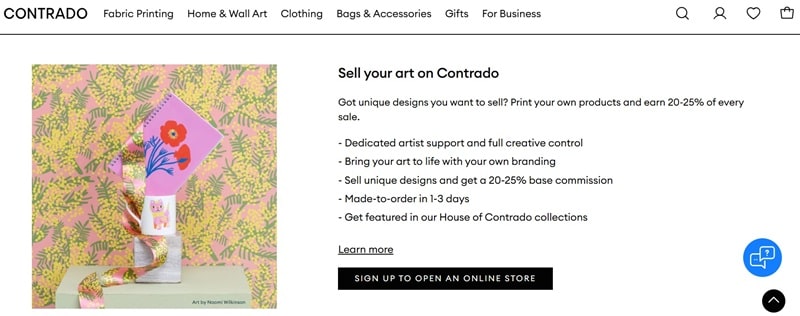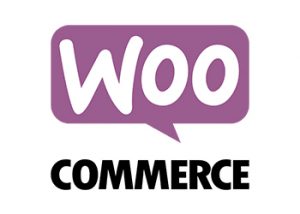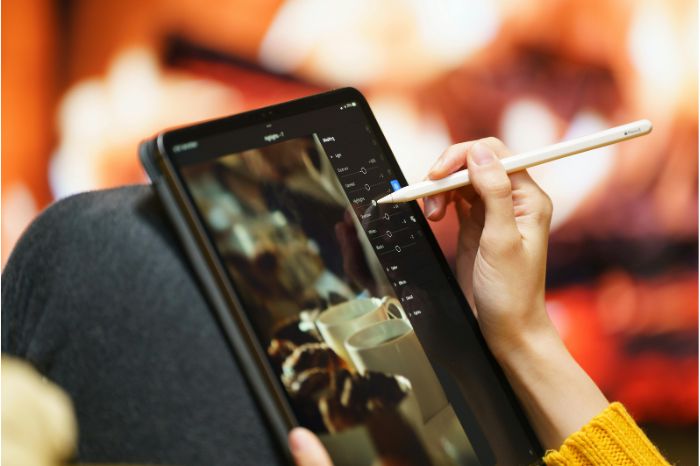If you’ve ever wondered, “What website is good for art commissions?” you’re not alone. With so many platforms out there, it can feel overwhelming to choose the right place to showcase your work. That’s exactly why I’ve put together this list of the best websites for art commissions – so you don’t waste time testing sites that don’t deliver.

Whether you’re looking to commission artwork or promote yourself as a commission artist, the right art commissions site can make all the difference. But of course, knowing where to sell is just one part of the puzzle – you’ll also need to figure out how to price yourself as an artist so your income actually reflects the value of your time and talent.
In this post, I’ll walk you through trusted platforms that help artists connect with clients who truly appreciate custom art. Let’s dive in and find the perfect spot for you to start landing commissions and boosting your creative income.
Related: How to Monetize Your Skills, Knowledge & Talents Online
Can You Make a Living Out of Art Commissions?
Yes, you can absolutely make a living from art commissions, but it depends on how you approach it. Being a commission artist isn’t just about creating beautiful work; it’s about treating your craft like a business. That means building a strong portfolio, choosing the right art commissions site, and learning how to price yourself as an artist (and avoid classic commission pricing mistakes) in a way that reflects both your skill and the time invested.
Many artists start small – maybe taking on a few commission artwork requests here and there, but with consistency, it can grow into a reliable source of income. The key is to find platforms where your art style aligns with what clients are actively searching for, and to maintain visibility with regular updates and effective communication.
It won’t happen overnight, but with the right strategy and the right websites for art commissions, you can absolutely turn custom artwork into a sustainable career.
How to Get Commissions for Artwork?
Before we dive into the best websites for art commissions to boost your income, let’s first discuss how to actually get those commissions in the first place. After all, it doesn’t matter how many platforms you sign up for if clients aren’t reaching out.
The good news? There are smart ways to position yourself so people notice, trust, and hire you for custom art.
Getting commissions isn’t about luck – it’s about visibility, clarity, and consistency. Clients want to know three things before they hit that “commission” button: what you create, how much it costs, and whether you’ll deliver on time. When you remove doubts and make the process easy, you stand out instantly.

Here are some practical tips to help you land commissions with confidence:
- Build a strong portfolio – Showcase your best and most recent work, and organize it by niche (portraits, pets, characters, etc.) so clients can see exactly what you offer.
- Be active on social media – Share work-in-progress shots, finished pieces, and commission openings on platforms like Instagram, TikTok, or Twitter. Visibility builds trust.
- Offer clear commission info – Post a “Commission Sheet” with your services, pricing tiers, delivery times, and revision policies. This eliminates guesswork for potential clients.
- Start with your network – Don’t underestimate friends, family, or online communities. Early commissions can help you gather testimonials and build momentum.
- Engage with art communities – Join Discord servers, subreddits, and Facebook groups for artists and art buyers. Many clients specifically look for commission artists there.
- Experiment with promotions – Limited-time discounts or “first 5 slots only” offers can create urgency and attract first-time buyers.
- Prioritize communication – Be friendly but professional when discussing commissions. Quick, clear responses make clients feel secure working with you.
- Ask for testimonials – Positive feedback from past clients is social proof that builds trust with new ones.
- Stay consistent – Even if you’re not fully booked, keep posting and reminding your audience that commissions are open. Consistency turns into momentum.
- Set your own rules – YOUR rules also matter. Be clear about the types of art you are not open to creating (for example, NSFW, political, or overly complex requests). This avoids confusion, protects your boundaries, and ensures you only take on commissions you’ll enjoy working on.
Landing commissions takes effort at first, but once people know you deliver great art and keep things professional, word-of-mouth will start working in your favor.
25 Best Websites for Art Commissions
One of the most common questions I hear from artists is: “What website is good for art commissions?” The truth is, there isn’t just one right answer – there are dozens of platforms where artists can showcase their skills and connect with paying clients. Some work better for physical pieces, some for digital commission artwork, and others are fantastic for growing long-term relationships with fans.
To help you figure out where you belong, I’ve put together this list of the 25 best websites for art commissions. We’ll explore them in five categories:
- Marketplaces
- Personal Website or Online Store
- Print-on-Demand
- Social Media
- Other Platforms
Each category has its strengths, and which one you choose depends on your goals, your medium, and whether you’re treating commissions as a side hustle or a full-time business. Let’s dive in!
Marketplaces: 5 Websites for Art Commissions
Marketplaces are one of the easiest ways to start selling your art. These platforms already have built-in audiences actively searching for unique, custom creations. All you need to do is showcase your portfolio and make yourself discoverable.
Etsy is the go-to marketplace for artists offering custom pieces. It’s incredibly beginner-friendly, and clients often search directly for “custom portrait” or “commissioned artwork.” Etsy charges listing and transaction fees, but in return, you get visibility on one of the most popular shopping platforms in the world.

Contrado is another strong option. It’s technically a print-on-demand (POD) platform, but artists can also take custom requests and apply their designs to products. If you’re interested in blending commissions with merchandise, Contrado makes that transition seamless.
Fiverr is perfect for commission artists who want to advertise their services in a clear, gig-based format. You can create listings for pet portraits, character designs, or digital illustrations, and buyers choose you directly. While the competition is high, Fiverr art commissions are still a great way to get started with no upfront costs.
DeviantArt has been around for years, and it’s still a solid art commissions site. The community is full of art lovers, and DeviantArt offers a dedicated commissions section where you can set up your services. It’s particularly good if you specialize in fantasy, anime, or fandom-inspired art.

Artstree is a smaller but highly specialized platform. Clients come here specifically to find artists for personal commissions – everything from portraits to character art. It’s more curated than Etsy or Fiverr, which can help you stand out if your style fits the community.
Personal Website or Online Store: 5 Websites for Art Commissions
Having your own website is the most professional way to sell art commissions. It’s like owning your own storefront online – no algorithms, no platform rules, just your brand front and center. While it requires more setup, the payoff is huge for artists who want full control.
A self-hosted website is your foundation. It’s where you can showcase your portfolio, publish commission info, and accept payments directly. If you don’t have hosting yet, I recommend DreamHost – reliable, affordable, and perfect for creatives who want independence.
WooCommerce is a plugin that integrates with WordPress, turning your site into a powerful online store. It’s flexible and lets you manage custom orders, digital downloads, and even physical deliveries. If you’re serious about creating a professional art business, WooCommerce is an amazing option.

Launch Your Online Store with WooCommerce
Build your store with WooCommerce, the #1 eCommerce plugin for WordPress. Free to start (you only pay for hosting), scalable with extensions, and perfect for selling physical or digital products directly from home.
Get Started with WooCommerceIf WooCommerce feels overwhelming, Ecwid is a simpler (and more affordable) alternative. It lets you add a shop to any website, and even works with free platforms like WordPress.com. Ecwid is beginner-friendly but still professional, so you can start small and grow over time.
Squarespace is known for its gorgeous templates, which are perfect for visual portfolios. It’s an all-in-one solution: hosting, design, and store features are built right in. Many commission artists love Squarespace because it looks professional without requiring much tech knowledge.
Shopify is the heavyweight option. It’s ideal if you want to run a full-time art business with commissions, prints, and merchandise all in one place. It’s more expensive than other options, but it has powerful e-commerce tools that make it worth the investment.
Related: Easy Beginner-Friendly e-Commerce Platforms for Side Hustle in 2025
Print-on-Demand: 5 Websites for Art Commissions
Print-on-demand (POD) services are ideal for commission artists looking to expand beyond one-off pieces. You can create custom designs for clients and then have them printed on products such as t-shirts, mugs, and posters. Some POD services integrate directly with marketplaces or your own website, which makes them even more powerful.
Printful is one of the best-known POD providers. You can integrate it with your own portfolio website or Etsy shop, so when someone orders a custom design, Printful handles the printing and shipping. It’s great for turning commissioned artwork into physical products.

Fast WordPress Hosting with DreamHost
Get fast and reliable web hosting starting at just $19.95/month. DreamHost’s Managed WordPress Hosting includes unlimited emails @ your domain, powerful hosting for blogs and online stores, and FREE domain name + domain privacy on yearly plans.
Get DreamHost NowPrintify is similar to Printful but offers more supplier choices, which means you can sometimes get better prices. It also integrates with multiple platforms, making it a flexible option for selling both commissions and merchandise.
Redbubble is technically a marketplace, but it doubles as POD. While you can’t take direct custom commissions there, many artists use it to upsell commissioned artwork as merch. It’s also a good way to get your art seen by a larger audience.
Zazzle allows for more personalized products. Clients can request custom designs, and you can upload them for printing on everything from stationery to home goods. It’s an excellent choice if you want to merge personal commissions with a broad product range.
TeePublic focuses heavily on apparel and fan art. While it doesn’t offer the same direct commission structure as Etsy, you can easily create custom designs and direct your commission clients to purchase them through TeePublic.
Social Media: 5 Websites for Art Commissions
Social networks aren’t technically websites for art commissions, but they’re some of the best ways to get clients. These platforms let you showcase your art, connect with fans, and build a personal brand. Just remember – you’ll need a payment processor like PayPal or Stripe to actually finalize the commissions.
Instagram
Instagram is a visual-first platform where artists thrive. Use stories, reels, and posts to showcase your commissions and behind-the-scenes process. Hashtags and engagement are key here.
YouTube Channel
A YouTube channel is fantastic for building trust. Sharing speedpaints, tutorials, or vlogs about your art journey helps fans connect with you on a deeper level – and many of them will want to support you through commissions.
Read next: Blogging or YouTube, Which One is More Profitable?
Pinterest
Pinterest works as a discovery engine. By posting your commissioned artwork with the right keywords, your pins can bring in traffic for months (or even years). It’s less about socializing and more about being found. Also, art-lovers l.o.v.e to go to Pinterest to find new art and artists (your author here included 🙋🏻♀️)
TikTok
TikTok is currently one of the fastest-growing platforms for artists. Short-form videos of your process can go viral quickly, driving tons of commission requests. The algorithm favors consistency, so posting regularly helps.
X/Twitter
X (formerly Twitter) is a great place to connect with art communities, fandoms, and other artists. Commission openings often spread quickly through retweets, which can land you clients you’d never reach otherwise. So, as you can see, Twitter art commissions remain strong thanks to many of the platform’s users
Extra 5 Great Websites for Art Commissions
Beyond marketplaces and social media, there are platforms built specifically to support creators and their income. These are perfect for building a community around your art while still offering commissions or custom work.
Ko-fi lets fans support you directly with small donations or commissions. You can set up commission slots, digital downloads, or even memberships. Payments are simple and go straight to your PayPal or Stripe.
Patreon is more about recurring income. You can set up membership tiers where fans get special perks like commission discounts, early access, or exclusive artwork. It’s a smart way to build long-term relationships with your audience.
Buy Me a Coffee is similar to Ko-fi, but with its own twist. It’s quick, user-friendly, and lets you offer both one-time commissions and membership perks. Payments go directly to your account without complicated fees.
ArtStation is a professional portfolio site, but it also has a marketplace. Many game studios, publishers, and collectors browse here, making it a great option if you’re aiming for higher-end commission artwork.
DeviantArt Subscriptions (different from its regular commission feature) lets you offer paid memberships and exclusive art. Combining commissions with subscription perks can turn casual fans into long-term supporters.
Do I Own The Art I Commissioned?

Ownership depends on the agreement. Typically, the artist retains copyright unless you specifically negotiate it. Always clarify usage rights with your client or artist beforehand to avoid confusion and ensure everyone knows who can reproduce or sell the artwork.
Do I Need a Contract for Art Commissions?
Yes, a contract protects both you and your client. It clarifies deadlines, payments, revisions, and usage rights. Even a simple written agreement helps prevent misunderstandings and keeps commissions professional and stress-free.
How to Sell Art Commissions
Selling art commissions isn’t just about sharing your talent – it’s about building a system that works for you and the people who want your art. If you’ve ever felt unsure about where to start, don’t worry. Breaking it down into clear steps makes the process a lot less overwhelming and a lot more exciting.
Here’s how you can set yourself up to sell art commissions like a pro:
Choose Your Niche
Before you start offering commissions, decide what type of art you want to be known for. Do you love drawing pets, fan art, portraits, or fantasy characters? Picking a niche helps potential clients recognize your style instantly and makes it easier to market yourself.
Consider Your Medium and Style
Will you work with traditional media like pencils, paints, or markers, or stick to digital art? Each medium has different costs, timelines, and client expectations. Also, be clear about your art style – whether it’s realistic, anime-inspired, or stylized – so people know exactly what to expect when they commission you.
Evaluate Demand
Take a look at what’s trending on popular art commissions sites. Some niches – like pet portraits or custom character art – are always in demand. Balancing your passion with what clients are currently looking for is the sweet spot.
Factor in Time and Availability
Ask yourself: how many hours a week can you realistically dedicate to commissions? If you’re working another job or studying, you might start small. Later, you can build up to turning your side hustle into a full-time career if that’s your goal.
Don’t Forget Costs
Art supplies aren’t free, and even digital artists need software, devices, and sometimes cloud storage. Be sure to factor these costs into your pricing. Undervaluing yourself not only hurts your income but also sets unrealistic expectations for clients. Also, some platforms and marketing strategies for creatives and artists can add to costs as well.
Plan the Logistics
Decide if you’ll be selling physical pieces or sticking to digital commissions. Physical art adds extra challenges like packaging, shipping, and handling returns. Storing your artwork at home can get overwhelming, and outsourcing to warehousing services can cut into your profit.
Digital art, on the other hand, avoids most of those headaches – but requires clear rules about file delivery, revisions, and copyright.
Side Hustle or Full-Time?
There’s no right or wrong answer here. You can keep art commissions as a side business for extra income, or scale it up into a full-time job. Many artists start part-time and transition as they build a steady flow of clients.
Build an Online Presence on The Best Websites for Art Commissions
Your portfolio is your storefront. Use platforms like Instagram, ArtStation, or DeviantArt to showcase your best work. Pair that with a self-hosted portfolio website (starts at $19.95/month), where clients can directly request pieces, and you’ll maximize your reach.
Communicate Clearly With Clients
Always set boundaries: turnaround times, revision limits, payment terms, and what clients can or can’t do with your art. Being upfront avoids misunderstandings and helps you maintain professionalism.
Keep Improving and Promoting
The most successful commission artists don’t stop learning. Keep refining your skills, experimenting with new styles, and promoting your services regularly. Every new piece adds to your portfolio, which means more opportunities to attract clients.
With these steps, selling art commissions becomes less of a mystery and more of a roadmap. You don’t need to have it all figured out from the beginning – just start small, stay consistent, and keep reminding yourself that your creativity has real value in the marketplace.
Can Beginner Artists Do Commissions?
Absolutely! Many beginners wonder, “Can beginner artists make money?” The answer is yes. Start small, focus on niches you enjoy, and clearly communicate your skill level. Even simple, well-executed pieces can attract clients, and each commission helps you grow your confidence, portfolio, and income.
How Much Should I Charge as an Artist?
Pricing can feel tricky, but it’s essential. Ask yourself: how do you price yourself as an artist? Factor in time, skill, materials, and demand. Start with fair rates that reflect your effort, and adjust as your experience and reputation grow.
Popular Types of Commissioned Artwork in Websites for Art Commissions
Let’s just explore some types of art commissions. Each type has its own audience and style, and understanding the options can help you decide what fits your skills and interests.
- Anime Art Commission – Clients who love Japanese animation styles often request anime-style art commissions for characters, fan art, or original creations.
- Oil Painting Commission – Traditional oil paintings are timeless and perfect for portraits, landscapes, or commissioned décor.
- Drawing Commissions – Simple or detailed hand-drawn pieces, from pencil sketches to inked illustrations.
- Roblox Art Commissions – Digital art tailored for Roblox avatars, game thumbnails, or fan creations.
- Comic Art Commissions – Full-page comic art or single-panel pieces, ideal for storytelling or web comics.
- Chibi Art Commission – Cute, exaggerated small characters, often used for gifts or social media avatars.
- Fantasy Art Commissions – Dragons, mythical creatures, and magical worlds for games, books, or personal collections.
- Pet Drawing Commissions – Custom portraits of clients’ pets, popular for gifts and home décor.
- Custom Digital Art Commissions – Also known as online art commissions, delivered digitally for avatars, banners, or prints.
- Character Commissions – Original characters for role-playing, games, or personal collections.
- Concept Art Commissions – Professional-level concept art for games, films, or creative projects.
- 3D Art Commissions – 3D models, renders, or animations, often for games, collectibles, or virtual environments.
- Custom DnD Character Art – Personalized illustrations of Dungeons & Dragons characters for players or campaigns.
FAQs
How to get commissions for artwork?
Promote your work online, showcase a strong portfolio, engage with communities, offer clear commission info, and respond professionally to inquiries. Consistency helps build trust and attracts clients.
Can commissions be free?
Yes, some artists offer free commissions for practice, exposure, or giveaways. However, free commissions are rare, and most professional work should be compensated fairly.
Is Arty good for commissions?
Arty can be a useful platform for commissions depending on your style and audience. Check fees, visibility, and terms before committing to ensure it aligns with your goals.
What is the highest commission in art?
The highest commissions can reach millions of dollars for famous artists, high-profile portraits, or major gallery works. For most commission artists, rates vary widely based on skill, medium, and client demand.
How much is the average artist commission?
Average commissions vary widely, from $50 to several hundred dollars for digital or traditional art. Pricing depends on complexity, size, medium, and the artist’s experience.
How do I charge for a commissioned painting?
Calculate time, materials, complexity, and your experience. You can charge hourly, per project, or tiered packages. Always clarify pricing with the client before starting.
How do I sell my art?
Showcase your portfolio online, join marketplaces, use social media, consider your own website, offer clear commission info, and communicate professionally. Building a reputation and visibility helps convert fans into paying clients.
Final Thoughts on The Best Websites for Art Commissions
At the end of the day, the best websites for art commissions depend on your goals. Marketplaces help you start quickly, personal websites give you control, print-on-demand expands your reach, social media builds community, and other platforms support your income in creative ways. The smartest approach? Mix and match until you find the combination that works best for your art and your lifestyle.

Launch Your Online Store with WooCommerce
Build your store with WooCommerce, the #1 eCommerce plugin for WordPress. Free to start (you only pay for hosting), scalable with extensions, and perfect for selling physical or digital products directly from home.
Get Started with WooCommerce





